According to the Lonely Planet Guide to West Africa, The Gambia is Africa for beginners. By which I assume they mean for the travelers, because the locals are experts at scamming money and charging inflated prices. The Gambia is a relatively short flight from Europe and being an English-speaking nation is quite popular with British people who wish to sample the forbidden delights of Africa without enduring the hardship. Indeed, The Gambia is becoming an attractive retirement destination as the cost of living is undeniably less than Britain. Equally, The Gambia a relatively cheap holiday destination for Western tourists and they appear happy to pay whatever prices the locals charge – even when those prices are much higher than other Gambians might be asked to pay for the same item or service. I fully admit that I may be alone in believing that it should be the same price for all. I mean it’s not as if visitors to Britain or America pay twice as much as a local for a meal or a hotel room. There again The Gambians may think it is good business to ask as much as possible for something and if the tourist will pay then why not? I don’t have a good answer for that, but when Christi and I try to bargain hereabouts the locals are surprised and become quite stubborn. I mention this, now, dear reader, because our tour today (of Serrukunda market, Abuko Nature Reserve, and the coastal waterways) left me cold and indignant. Which is pretty much what I think of The Gambia in general. I didn’t come here thinking I would dislike the place, but of all the countries I have visited in Africa (and the total to date is 21) The Gambia is my least favorite.
The guide assigned to us by our hotel is called Lamin. I’m not sure if he works for the hotel or if the tour is sub-contracted. The tour begins pleasantly enough at the Serrukunda market. It’s a typical West African market and we have seen plenty over the last 6 weeks, so perhaps we are less impressed than the typical tourist. We move on swiftly, which is one of those rare occasions where the time allotted by the tour guide is too much. Next up is the Abuko Nature Reserve. Even though the tour is costing us D1500 (US$60), the D35 entrance fee is, surprisingly, not included. Lamin leads us along a series of marked trails through dry, dense foliage and forests. We spot a red colobus monkey and later a did-dik (small antelope). We stop in the shade at a watering hole,which supposedly is home to Nile crocodiles, although we did not see any. There were a variety of herons, kingfishers, and other wading birds present (the park is notable for its bird life) and a monitor lizard. Again, we are underwhelmed. Mole National Park and Niokolo Koba National Park were infinitely better and don’t forget Christi and I have been on safari in East Africa, which is about as good as it gets. The Abuko Nature Reserve is more like a city park that just happens to have a dwindling amount of wildlife living there.
In the center of the reserve is a small zoo, which is home to a troop of friendly baboons who quickly snatch the proffered nuts (courtesy of Lamin) and red colobus monkeys. The caged hyenas are a fairly emasculated group, although the wood vultures that gather to partake in the carrion feast doled out by the zoo attendants are at least wild. Lamin says the zoo did have a lion at one point, but he escaped and was shot by the army! It ‘s another hot day in The Gambia (even though we’re here in March. I can’t imagine how unpleasant West Africa would be in the heat of summer) so we stop at the zoo cafe for a cold drink and being the nice people we are buy one for Lamin as well. Leaving the park is a bit like exiting a ride at Disneyland: you have to negotiate the souvenir shop first. And yet again the locals engage in the hard sell, but Christi and I are equally defiant in our desire not to buy anything (mostly because we’d have to carry the crap around Africa until we could think of some way to ship it all home without it getting broken along the way).
Our final destination is Lamin Lodge and our 2-hour cruise around the mangroves. This is where things really begin to go wrong. Preceding the boat trip we are given a mini village tour, which is actually quite fascinating. We are told that oysters and cockles are collected from the mangroves at low tide by the women of the village. The oysters actually attach themselves to the roots of the mangroves and the women cut them free. By the time we arrive the women of the village are shelling the oysters and cockles for eventual sale to nearby restaurants. The shells are not wasted, though. First they are dried and then burned to a white ash. When this ash is combined with sand it forms cement; when combined with water it forms white paint. The addition of different dyes can give a variety of colors. Alternatively, the dried shells can be crushed and sold to chicken farmers. The crushed shells are added to the chicken feed and provide a good source of calcium. So far so good. The next thing we know, though, the village guide wants a donation to the local village blind school. This is a blatant scam. We are very disappointed with Lamin who (despite being a guide for 12 years and a resident of the village) says he did not know we would be asked to make a donation after this tour. Christi and I only toured the damn village to be polite. Clearly Lamin is being economical with the truth. Lamin quickly makes a donation and hustles us away to a boat. He’s arranged an upgrade he says. So instead of a gentle 2-hour paddle thorough the mangroves and an opportunity to spot wildlife and watch the world go by, we get a 1-hour power-boat ride that zooms around the mangroves causing mayhem. Christi and I are not impressed.
As I mentioned before one possible option for our time in The Gambia was a cruise upstream possibly as far as James Island which the Ile de Goree and Cape Coast Castle equivalent. Lamin says he will take us tomorrow for only D3,500 (US$130). Lamin Lodge appears to offer boat rides (via a pirogue) to James Island. Lamin assures us that to go by pirogue would be D7,000 (US$260). I’m skeptical of everything he says, but before I can confirm or even negotiate a price with the owner of the pirogue, Lamin dashes ahead and has a rapid conversation in the local Wolof language. Whatever the price might have been, the owner of the boat now assures us it is D7,000. I am furious with Lamin, who genuinely appears shocked. We return to our hotel in silence. Lamin then has the nerve to ask about hiring him tomorrow to guide us to James Island and waits for a tip for today’s outing. He waits in vain.
Still, one is not alone for long in The Gambia and nother ‘fixer’ wannabe called Moore hangs around the entrance to our hotel compound (he’s not allowed in the grounds) wanting to talk to us. Somehow he knows we want tickets to Nouakchott for the day after tomorrow. He says his uncle runs a travel agents and the price per ticket is D6,500 (US$240) which is a great deal. If you recall it was US$190pp just to get to Dakar. We agree to meet him tomorrow to buy the tickets. He adds that he can also help with transport to James Island (how did he know we wanted to go there as well?). Perhaps things are looking up.
Blog post by Roderick Phillips, author of Weary Heart – a gut-wrenching tale of broken hearts and broken test tubes.


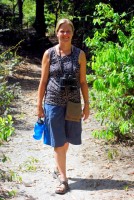
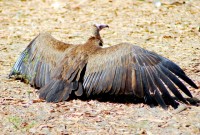
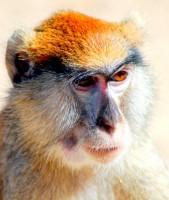
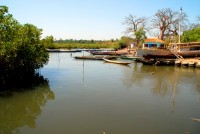
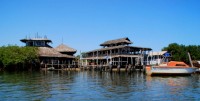
Speak Your Mind